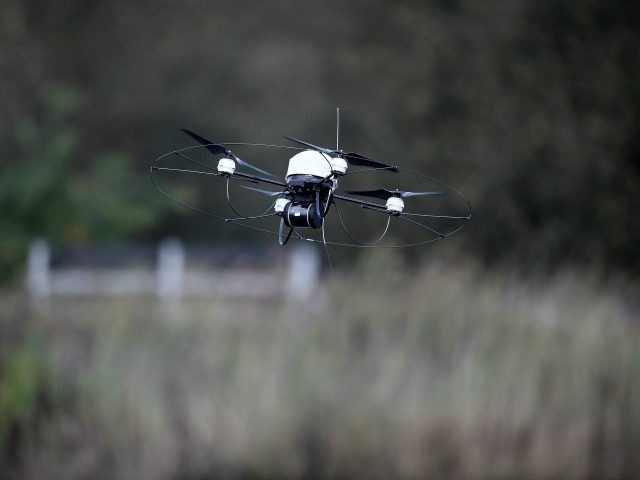The Islamic State (ISIS/ISIL) and the Iranian terror proxy Hezbollah have reportedly weaponized low-tech drones that can be bought in stores and on Amazon, including Styrofoam model planes, by attaching improvised explosive devices (IEDs) on them and using them for surveillance and reconnaissance.
United Press International (UPI) reports:
The Islamic State is now attempting to use small, commercially-available drones armed with explosives to launch attacks at American and Kurdish troops in Iraq, according to the Pentagon, posing a new challenge for the agency.
A drone launched by the Islamic State, also known as ISIS, ISIL and Daesh, was shot down in northern Iraq by Kurdish forces last week. The drone, which appeared to be one used for surveillance, was taken back to their outpost for examination and exploded while being taken apart.
The Associated Press (AP) adds:
A recently released video belonging to an al-Qaida offshoot, Jund al-Aqsa, purportedly shows a drone landing on Syrian military barracks. In another video , small explosives purportedly dropped by the Iran-backed Shiite militant group Hezbollah target the Sunni militant group Jabhat Fatah al-Sham, formerly known as the Nusra Front, near Aleppo. The technology is not new, but the videos are the first known demonstration of these capabilities by any militant groups…
A number of militant groups in the Middle East, including the Islamic State group, Jund al-Aqsa and Jabhat Fatah al-Sham, as well as Hezbollah and Hamas, have all released videos indicating that they have surveillance and reconnaissance drones. Syrian anti-government rebels and militias loyal to President Bashar Assad were also flying cheap quadcopters and hexacopters as early as 2014 to spy on one another.
Hezbollah reportedly claims it has been using weaponized drones for two years.
“A recent video of bomblets hitting a militant camp near the Syrian town of Hama is the first known documentation,” notes AP.
Chris Woods, the head of the Airwars project, which tracks the international air war in Iraq, Syria and Libya, told AP that “there are a million ways you can weaponize drones — fire rockets, strap things in and crash them.”
“This is the stuff everyone has been terrified about for years, and now it’s a reality,” he added.
On Wednesday, the Pentagon acknowledged that French and Kurdish forces in northern Iraq have been attacked and seriously injured by an exploding drone.
The attack added “a new worry to the wars in Iraq and Syria as militant groups learn to weaponize their store-bought drones,” reports AP.
On Oct. 2, an IED was attached on a drone that exploded and killed two Kurds after it was taken back to their camp near the Iraqi city of Irbil, revealed Air Force Col. John Dorrian, the spokesman for the U.S.-led military coalition in Iraq.
An unnamed U.S. official revealed “the drone looked like a Styrofoam model plane that was taped together in a very rudimentary style,” reports AP, adding that “it appeared to be carrying a C-4 charge and batteries, and may have had a timer on it.”
Jihadists are using various forms of improvised and modified drones, but “there’s nothing very high tech about them,” said Col. Dorrian.
“They can just buy them as anybody else would,” he told Pentagon reporters Wednesday. “Some of those are available on Amazon.”
Dorrian conceded that while the drones pose a low military threat, the United States and its allies is taking it seriously
“It’s not going to change the overall balance of power in the region, but it matters by the very fact that these are things that are normally beyond the capability of insurgents or terrorists groups,” Peter Singer, author of the book “Wired for War: The Robotics Revolution and Conflict in the 21st Century,” and a senior fellow at the New America Foundation, told AP.
“Syrian skies are already bustling with traffic. Coalition forces have launched some 5,400 airstrikes on [ISIS] targets since September 2014,” AP learned from Woods. “Drones account for only about 7 percent of America’s total air operations in Iraq and Syria because the U.S. is ‘stretched really thin’ with drone operations in Afghanistan, Yemen, Pakistan and elsewhere.”

COMMENTS
Please let us know if you're having issues with commenting.